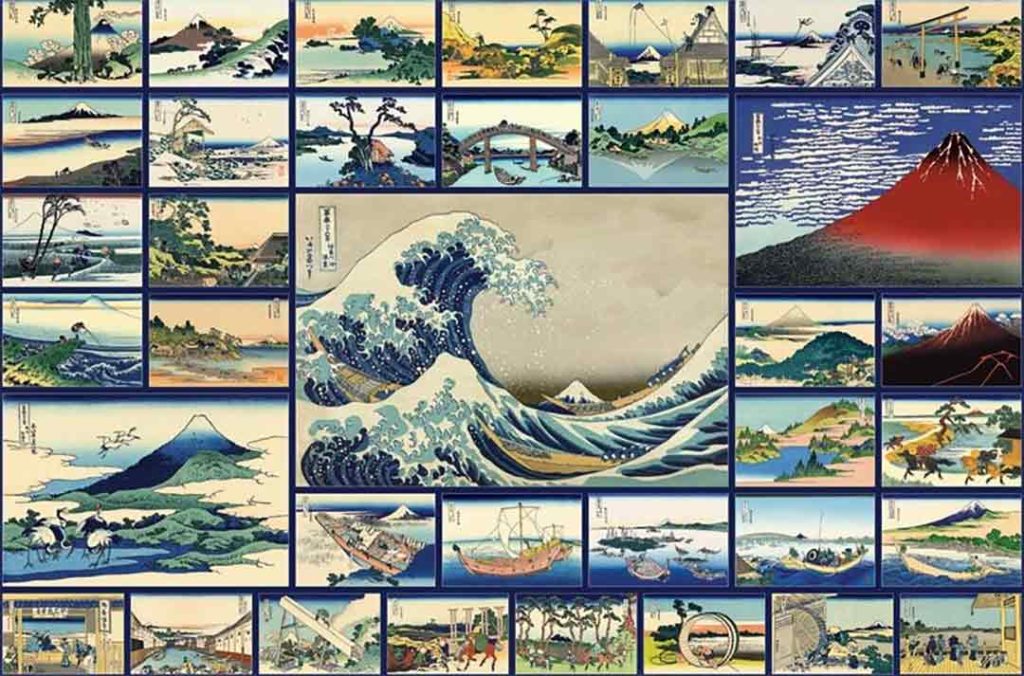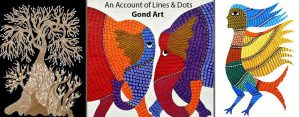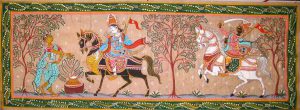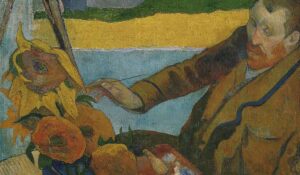Introduction of ‘The Great wave off Kanagawa’ with warm and cool colors to age group 8yrs to 13 years. This artwork is a woodblock print by Japanese ukiyo-e artist Hokusai. This art work was published sometime between 1829 & 1833 in late Edo Period. This was the first print in Hokusai’s series Thirty-six views of Mount Fuji.
Class objective is to identify and discuss the effective use of the elements of art, to utilize painting techniques to create value, space and contrast and most importantly understanding warm & cool colors. Class also includes discussion on, How does Hokusai use the elements of art in the image? What is the most powerful element you see? Why is the mountain so small? What role does nature play in the image of ‘The Great wave off Kanagawa’?
Who was Katsushika Hokusai ?
Hokusai was born in 1760 in Edo (now Tokyo), Japan. During the artists’ lifetime he went by many different names; he began calling himself Hokusai in 1797. Hokusai discovered Western prints that came to Japan by way of Dutch trade. From the Dutch artwork Hokusai became interested in linear perspective. Subsequently, Hokusai created a Japanese variant of linear perspective.
Hokusai was inquisitive about oblique angles, contrasts of close to far, and contrasts of manmade and therefore the natural. These are often seen in underneath the background Kanagawa through the juxtaposition of the massive wave within the foreground that dwarfs the small mountain in the distance, likewise because the inclusion of the mens and boats amidst the powerful waves.
About The Great Wave off Kanagawa Painting
The great wave off Kanagawa is Hokusai most famous work, and one of the most recognisable works of Japanese art in the world. The image depicts an enormous wave threatening three boats off the coast of the town of Kanagawa (the present-day city of Yokohama, Kanagawa Prefecture) while Mount Fuji rises in the background. While sometimes assumed to be a tsunami, the wave is more likely to be a large rogue wave.
Mount Fuji a symbol which holds great importance in Japanese culture. It is a symbol of national pride and identity, of beauty, and holds great spiritual importance. Hokusai, in this series, wanted to show all the aspects of Mount Fuji’s beauty and importance, as well as the beauty of the whole of Japan. The Great Wave depicts a raging, powerful and formidable, yet awesomely beautiful ocean scene. The work already stands as an admiration of both the awesome power and beauty of Japan’s oceans and coastline, and of the strength of the fishermen who braved it. But most importantly, Mount Fuji is clearly visible, standing tranquil and unmoving in the background. The most important symbol in this work is not the waves, nor the fishermen in their boats, for they only contribute to the importance of the mountain.

Warm colors and Cool colors
It’s a great project to talk about warm and cool colors. We always have simple color wheel chart to refer to, looking at the color wheel really helps most kids to differentiate warm and cool colors. Kids loved this Project, its a huge success. what we mean was children were completely engaged. It introduced a style of art that they weren’t used to see in art room. If you like our article check our another blog on Warm color & Proportion – Van Gogh’s ‘Sunflower’.



